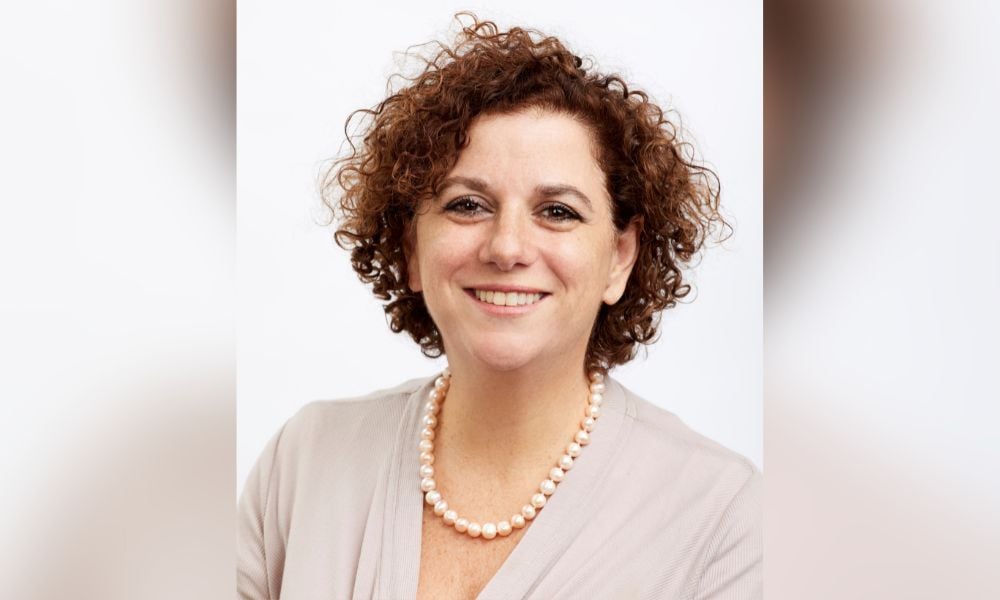Pascale Alpha of CAE to speak at upcoming HR Tech Summit Canada

Making employees feel welcome in a large organization is a challenging task, but technology is providing HR professionals with new tools to do the job.
At CAE, a global company with around 13,000 employees globally, at 200 sites in 40 countries, keeping DEI efforts on track involves a number of new tech tools, according to the organization’s chief diversity, equity and inclusion officer, Pascale Alpha.
For example, as part of its recognition policy, CAE enables its workforce to send out digital thank-yous -- but with a different spin.
“It uses artificial intelligence,” says Alpha from CAE headquarters in Montreal. “So when you’re sending your little e-Bravo to your colleague, the inclusion advisor is going to analyze the biases in the text that you’ve written and say, ‘Hey, perhaps, you should try this.’ And it’ll explain: it gives the employees some coaching on why there’s a potential bias in the text, and it will offer advice on how to rewrite the message.
“It’s very useful because what the company did is they took the data from millions of messages that were sent and using that data they were able to create this tool.”
Alpha is one of the panel speakers in the upcoming HR Tech Summit Canada , happening June 8 at the International Centre in Mississauga, Ont. She shared with Canadian HR Reporter some of her experiences of the technology that the company is using to manage DEI efforts. The topic Alpha will be speaking about is leveraging technology to achieve DEI goals.
A high-tech company turns to a tech solution
As a technology company (CAE manufactures flight simulators and trains pilots), it was only natural to use high-tech solutions.
“As a leader in innovation, obviously it’s important for us to use technology as well in our internal processes to make them stronger, to support HR and support diversity, equity and inclusion. Diversity is part of our values, is part of our strategy, and our objective is to foster and promote DEI to ensure that our employees feel valued -- that they feel seen, that they feel they belong,” says Alpha.
Before embarking upon a technological solution, the “dirty work” of analyzing what data is already on hand must first take place, says another expert and panellist at the HRD summit.
Pursuing DEI in a ‘male-dominated’ industry
Working in a predominantly male industry, CAE has been successful in recent years boosting its proportion of female employees, says Alpha.
“We’re in industries that are male-dominated, so when we started five years ago, in 2018, 18% of our employees were women and today, we’re at 23%. And then at the VP level, same thing: 15% of our vice-presidents were women; today, they’re 25%.”
“We’ve made a move, but we need to do more to encompass all diversity beyond gender, so everything: people of colour, employees who are Black, our indigenous communities; people with disabilities, employees who are diverse LGBT, etc. We want to be a diverse and very inclusive company,” she says.
In order to find out more about the diverse makeup of CAE’s workforce, the company recently deployed a survey tool that was developed originally to measure engagement.
“So using the same tool, [it asks] questions related to inclusion and belonging. It kind of gives us a bit of the baseline: how do our employees feel? Do they feel that they belong? Soon the tool that we use, called Officevibe, is going to be tracking inclusion and belonging as part of those special surveys; it’s going to be doing it automatically,” says Alpha.
The company also uses AI to help eliminate bias in recruiting, she says.
“As a recruiter, you’re going to see all these CVs but the AI will analyze the resumes that you’re receiving and flag the ones that fit. They call it a fit score: AI basically is able to flag the CV that really fits your requirements so you remove bias because the AI is going to tell you the specific skills and experience that you’re looking for are in those CVs.”




